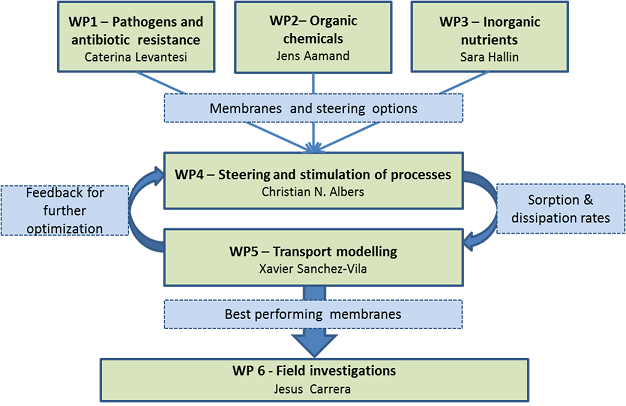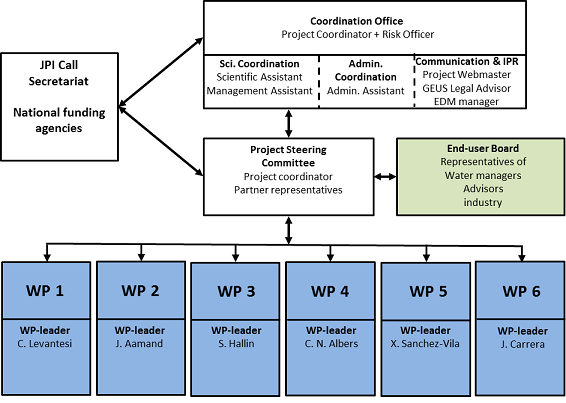ACWAPUR
Accelerated Water Purification during Artificial Recharge of Aquifers - A Tool to Restore Drinking Water Resources
Partners
Partners
Instituto de Diagnostico Ambiental y Estudios del Agua
Instituto de Diagnostico Ambiental y Estudios del Agua
Swedish University of Agricultural Sciences
Universitat Politecnica de Catalunya
Abstract
Abstract
Water is essential for life, not only for direct consumption, but also for sanitary requirements, and for agricultural and industrial production. Pure drinking water is a limited resource and the demand for water is increasing globally due to human population growth, increased wealth, and climate change. Development of efficient and cost-effective techniques for water purification and reuse is therefore urgent. Artificial recharge of aquifers is an often used technique to replenish deficient water resources.
Water being insufficient for drinking water is infiltrated via basins or surface spreading through soils and aquifer sediment thereby improving the water quality. Although artificial recharge has been used for decades, the technique is often operated as a black box without knowledge of the microorganisms and the metabolic processes and pathways involved. ACWAPUR aims at developing techniques, steering tools and management guidelines to prevent leaching of pathogens, inorganic nutrients and organic pollutants to underlying aquifers during artificial recharge processes. This will be achieved by the construction of advanced treatment membranes with a porosity that prevent leaching of pathogens and at the same time provide optimal conditions for microbial degradation processes. The membranes will consist of organic layers which on the one hand, promote sorption of contaminants and on the other hand, facilitate the creation of different redox conditions, to accelerate different contaminant degradation processes. ACWAPUR will also provide fundamental knowledge about pathogen transport and microbial degradation of nutrients and contaminants to be used for the development of steering tools and management guidelines for artificial recharge of aquifers. Examples of steering tools to be investigated includes 1) stimulation of ammonium oxidizing bacteria which are known to facilitate co-metabolic degradation of contaminants 2) supply of specific degrading bacteria or nutrients to treatment membranes 3) addition of easily degradable organic carbon to facilitate nitrogen removal by denitrification, and 4) coating of membrane sediments by e.g. iron oxides to facilitate adhesion of pathogenic bacteria. In addition to bringing considerable advances to water treatment biotechnology, the main outcome of ACWAPUR will thus be prototype membrane systems, steering tools and management guidelines ready for commercialization and implementation in a number of artificial recharge applications.
Project Structure:
Project Structure:

Implementation:
Implementation:

Outcome/deliverables:
Outcome/deliverables:
Improved environmental impact alleviation of climatic events. A holistic approach to the urban water balance and improved management of urban water resources. A new urban monitoring station and shallow subsurface monitoring
in Bucharest and Better prediction of changes in groundwater level Incorporating rain-on-snow and snowmelt events in flood risk
assessment Prototype of nature-based water quality filters and treatment train Guidelines for improved design of stormwater systems for extremes.